Text
Week 10: Social Media Governance
This week, we discussed online governance and online harassment. It is interesting to observe online governance at work even in something small such as Facebook Group. I myself am part of multiple Facebook groups including Buy/Sell/Trade groups and how they govern themselves is surprisingly different. The levels of action the administrators and moderators go to to ensure that there are no issues and that no one gets scammed is vastly different. In one group, a scammer gets ousted within hours of the offence being brought to light, yet in another everyone is just warned to be careful around said scammer and people behaving like them.

As mentioned earlier, the lecture and the readings also touched on online harassment. One reading focuses on the idea of gaslighting and I’ve learnt that it’s a lot more serious than what I thought my friends and I do to each other despite us calling it gaslighting. Turns out gaslighting is more focused making a victim’s situation and/or statements irrelevant or incorrect (Gleeson, 2018) and it’s sad this particular form of abuse has been used against those who are trying to speak out about their abuse on social media and in person. It is also incredibly disappointing that more isn’t being done by companies such as Facebook and Twitter to prevent said abuse on their platforms. A ban or a warning is not enough, online abuse should be treated the same as in person abuse, with legal action. As Ostini and Hopkins say in the readings, “Online harassment is a form of violence” and to an extent this is true. Online abuse can be just as harmful as physical violence, especially for young people. All too often do we hear on the news that a young person is practicing self-harm or even ending their own life because of the hate thrown at them on social media. It needs to stop.
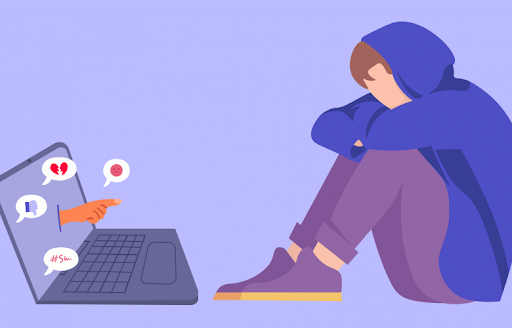
ReferencesL
Gleeson, J 2018, ‘Explainer: what does ‘gaslighting’ mean?’, The Conversation, 6 December 2018, viewed 12 May 2021, <https://theconversation.com/explainer-what-does-gaslighting-mean-107888>
Ostini, J & Hopkins, S 2015, ‘Online harassment is a form of violence’, The Conversation, 8 April 2015, viewed 12 May 2021, <https://theconversation.com/online-harassment-is-a-form-of-violence-38846>
0 notes
Text
Slow Fashion
In this week’s content, we went over the concept of Slow Fashion which as discussed in one of the readings is typically linked to the sustainable consumption movements which focuses on sustainability values, ethical working conditions and decreasing environmental contaminants (Chi et al, 2021). This concept of slow fashion has not been a particularly new phenomenon. As the lecture pointed out, slow fashion as been around since the 1960s as part of the counter culture movement which was prominent in the United States which involved protesting against America’s involvement in the Vietnam war, racial segregation materialism and other cultural standards (Lumen, 2021). It’s interesting that even 40 to 50 years later, counterculture still exists in our culture albeit in different forms.

I’ve found that I see it a lot in fiction, especially in the comic medium as now characters that stereotypically have always been a certain ethnicity are now having stories produced where that stereotype is being challenged. The Falcon and the Winter Soldier is a recent example of this, a storyline in that series shows that Captain America has always been a white man with blonde hair with blue eyes yet by the end of the show, The Falcon who is an African American, becomes the new Captain America.

The lecture also pointed out the four key elements that make a fashion label ‘sustainable’: there can be no child labour; the materials used should less harmful to the environment, recycled, upcycled and/ or more durable; the production process must be ethical and socially responsible which includes fair pay, local production and fair workplace treatment and a creation of long-term relationships to great fair pricing and wages (Milne, 2021). What I found quite shocking from the lecture was how big of an impact the fashion industry had on the environment, the fact that the US alone produces 11.9 million tons of discarded clothing is disgusting especially since roughly 70% of that figure ends up in landfills
References:
Chi, T; Gerard, J; Yu, Y & Wang, Y 2020, ‘A study of U.S. consumers’ intention to purchase slow fashion apparel: understanding the key determinants’, International Journal of Fashion Design, Technology and Education, vol. 14, no. 1, pp 101-112
Lumen 2021, ‘Counterculture’, Boundless US History: The Sixties: 1960-1969, Lumencandela, viewed 7 May 2021, <https://courses.lumenlearning.com/boundless-ushistory/chapter/counterculture/ >
Milne, E 2021, ‘Week 9: Digital citizenship case study: Social Media Influencers and the slow fashion movement’, MDA20009 – Digital Communities, 4 May 2021, viewed 5 May 2021
0 notes
Text
Week 8: Social Gaming
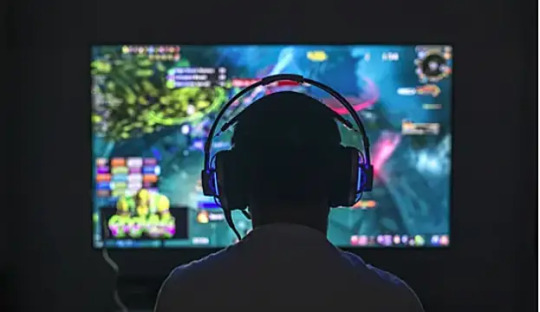
This week, we discussed Social Gaming, primarily focusing on video games. This topic has been by far my favourite topic as I am already deeply immersed in this culture. Yes, I am a ‘gamer’ and I fit the description that Taylor created perfectly, I am a white, middle-class man in his 20s (Hardwick, 2021) and I love playing and discussing video games with other people. For a brief period of time, I used to stream myself playing video games on Twitch, which generated a huge creator base with over 2.2 million broadcasters as of 2017 (Taylor, 2018). The tutorial discussion also brought on the topic of online abuse in video games. I myself have never received abuse during an online video game, however back during lockdown, Bandai, the company that makes and hosts tournaments for the trading card game I play, Dragon Ball Super Card Game, created some webcam events where players could compete using their cards over Discord video chat. Unfortunately I did cop some abuse during this time period regardless if I won or lost, but since I had no proof of said abuse, nothing was done to police it. I pretty much don’t play online much these anymore because unfortunately there is an abuse problem in lot of online multiplayer games. It is very similar to how Dara from “Oh, She’s a Tumblr Feminist” feels about Twitter in that she feels “attacked” for her opinions (Keller, 2019). In some online video games, other players will abuse people not only for their beliefs, like Dara on Twitter, but even just in game choices like what character you choose to play, this is what happened with me during that beforementioned webcam event, how you play, how good you are, how your voice sounds, etc. Fortunately video game companies are cracking down on these issues and in a lot of games now you can just mute in-game chat messages and voice so can just block out the hate and have fun

References:
Hardwick, T 2021, ‘Gaming Communities, Social Gaming and Live Streaming’ MDA20009 – Digital Communities, Learning materials via Canvas, Swinburne University of Technology, 27 April, viewed 28 April 2021
Keller, J 2019, ' "Oh, She's a Tumblr Feminist": Exploring the Platform Vernacular of Social Media Feminisms, Social Media + Society, vol.5, no.3, pp. 1-11
Taylor, TL 2018, ’Broadcasting Ourselves’ Watch Me Play: Twitch and the Rise of Game Live Streaming, Princeton University Press, viewed 2 May 2021
0 notes
Text
Week 7: Face Filters
This week, we focused on face filters, particularly the ones used on Instagram and Snapchat. As discussed in the lecture, filters use Augmented Reality (AR) technology which “allow "allows the user to see the real world, with virtual objects superimposed upon or composited with the real world" (Azuma, 1997, p.355). In this case, AR technology allows the user to alter their appearance into something more desirable. This could be as simple as removing undesirable features or to something more extensive as altering the entire face into something completely different.

Continuing from last week, the lecture and the readings touched on dysmorphia. This time focusing on the concept of digitised dysmorphia which demonstrates the pressure placed on women in particular to digitally alter their images (Coy-Dibley, 2016) and while it is similar to Body Dysmorphic Disorder (BDD), its treated as more of social issue more than a medical condition and can actually have benefits (Miller, 2021). Once again, from last week, I am continually disturbed that social media is having such an impact on how people see themselves and how it can alter a person’s behaviour to the point that they feel pressure to behave a certain way and alter themselves to achieve an aesthetic.
What I found extremely upsetting is the allegations of what face filters do to people of colour. As shown in the lecture, “people of colour find their complexions unnaturally and undesirably lightened by Snapchat’s filters”. (Barker, 2020, p.209) The idea that social media websites in this day and age could be pushing a racist ideology of beauty is inexcusable, there is no one set mould of what considered beautiful. Everyone sees beauty in a different and it’s not something you write into code for users to morph themselves into.
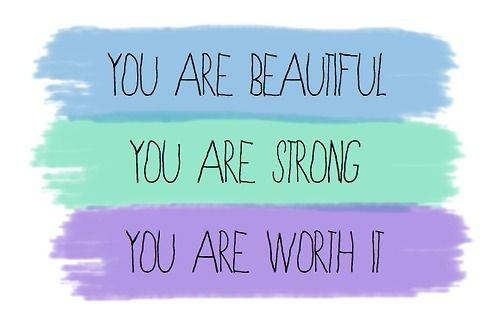
References:
Azuma, R 1997. A Survey of Augmented Reality, In Presence: Teleoperators and Virtual Environments, vol.6, pp.355-385
Barker, J 2020. Making-up on mobile: The pretty filters and ugly implications of Snapchat, Fashion, Style & Popular Culture, vol.7, no.2-3, pp. 207-221
Coy-Dibley, I 2016. “Digitized Dysmorphia” of the female body: the re/disfigurement of the image, Palgrave Communications, 16040
Miller, L 2021. ‘Week 7 Guest Lecture Instagram Filters’, MDA20009 Digital Communities, Learning materials via Canvas, Swinburne University of Technology, 20 April, viewed 22 April 2021
0 notes
Text
Week 6: Body Modification
This week, we discussed Body Modification on Social Media. After viewing this weeks content, I’ve begun to view social media in a completely different light, especially Instagram. Before I never gave any particular image much thought, but now I find myself thinking aesthetic templates and where images fit into that mould. It’s scary to think just how much of social media websites like Instagram have been pornified. Some of my closest friends fit that idea of “presenting a highly sexualised version of [themselves] online” (Mavroudis, 2020; Herring, 2015; Carrotte, Prichard, & Lim, 2017; Kapidzic & Ringrose, 2011) and yet they do not behave that way at all when I see them in person.
What I found particularly disturbing is that this idea of the perfect body on social media is genuinely causing people distress. This being the concept of Body Dysmorphic Disorder (BDD) that was discussed in the lecture in that people become dissatisfied with a particular part of their body to the point that affects their daily life (Mavroudis, 2009). A friend of mine previously struggled with his mental health because he thought he would never have a partner because he didn’t have the muscular aesthetic of what is typically depicted on Instagram. Fortunately, he managed to push past that way of thinking and has only just recently become a father of a beautiful baby girl.

The other aspect of the lecture I found interesting was the distinction between the Femininity and Masculinity aesthetic templates in that femininity is focused more on enhanced bodily features and make them the focused areas of any given image, whereas masculinity is not necessarily focused on one particular part of the male form, but rather the encompassing aesthetic of athleticism and overall physical perfection (Mavroudis, 2021).
References
Carrotte, E. R., Prichard, I., & Lim, M. S. C. 2017, ‘Fitspiration’ on social media: A content analysis of gendered images. Journal of Medical Internet Research, 19( 3). Viewed 23 April 2021, < https://swinburne.instructure.com/courses/33896/pages/week-6-body-modification-guest-lecture?module_item_id=2127314>
Mavroudis, J 2021, ‘Week 6 Lecture Digital Citizenship and Health Education’, Body Modification on Visual Social Media, Learning materials via Canvas, Swinburne University of Technology, 13 April, viewed 23 April 2021
0 notes
Text
Week 5: Digital Citizenship and Hastag Publics
In this lecture we went over digital citizenship and hashtag publics. As discussed in the lecture, the 2016 US election campaign is a prime example of how these concepts work. We saw Hillary Clinton approach the election process in a very professional manner and campaigned in a very traditional way. Whereas Donald Trump took to Twitter and campaigned in a very relaxed & informal by tweeting non stop about his policies and “Making America Great Again” (Enli, p.55, 2017).

Unfortunately that worked. The takeaway from this is that at the time the Democrats and those who supported them underestimated the power of social media and the hashtag. We’ve seen it time and time again, how quickly a movement can grow through the use of a hashtag. #BlackLivesMatter or #BLM is an absolute example of this.
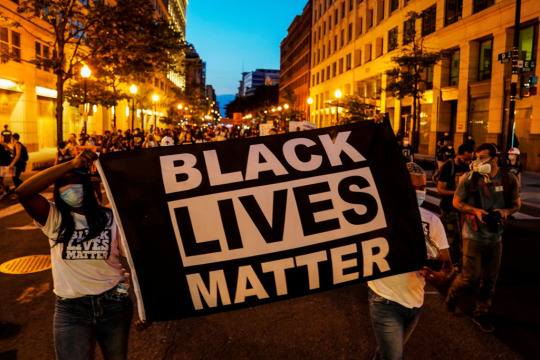
Before this hashtag spread throughout the internet, the fight against racism for of colour, while talked about occasionally on the news, was usually swept aside or in the public eye for 1 to 2 days and then would fade into nothing. Now with #BlackLivesMatter, the whole world became aware of the fight going on, not only in the United States, but all of the world. More action was taken to support people of colour, to the point where athletes from sports as the NBA actively refused to play until the association provided more support to people of colour in need. Without the hashtag behind it all, it is unlikely that this would’ve occurred and the change that is being made now, may have occurred years from now.
Hashtags also create community discussion threads for people discuss topics they are passionate in, share fan art & promote fan made content. Some of my favourite artists, I would’ve never had found if it hadn’t been for hashtags.
References:
Enli, G 2017; Twitter as arena for the authentic outsider: exploring the social media campaigns of Trump and Clinton in the 2016 US presidential election. European Journal of Communication, 32(1), pp. 50-61, < https://swinburne.instructure.com/courses/33896/pages/week-5-readings?module_item_id=1919444>
0 notes
Text
Week 4: Reality TV
Reality TV is arguably the most consumed (and one of the most produced) genre on TV. Yet as discussed in the lecture it seems to be the most hated genre amongst consumers of television. For example, the surveys that were discussed showed 88 percent of participants liked Comedy TV and yet 48 percent of those participants disliked Reality TV. This is interesting because, despite this supposed hatred towards Reality TV, it continues to top the ratings, like how the Block and Lego Masters helped Channel Nine top the rating in 2020.
Again despite the fact that people say they dislike reality TV a contradiction to what is occurring in reality. After every episode of a show like Survivor or Big Brother, they instantly become trending on Twitter providing “spaces… of informal conversations that constitutes the public sphere”(Graham & Hajru, p.20, 2011). Typically what occurs are fans of the show reacting to what occurred on that particular program. For example, people would tweet their reactions to who gets eliminated on Survivor or when a contestant finds an immunity idol. These reactions then create further discussion on the show into topics like “who’s going home next?”, “who’s going to win?”, “who betrayed who?” etc. And yet people say they don’t like reality TV.
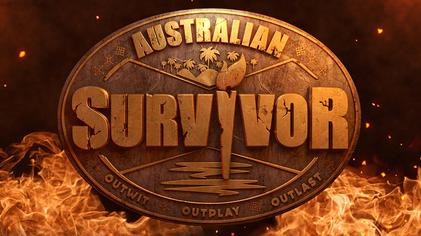
The public sphere was also topic discussed in this lecture. “The public sphere is the space where people can interact; where public opinion is formed; where citizens deal with matters of general interest and express and articulate their views” (Sakariassen 2020). As mentioned before, discussing a television show on a medium like Twitter is an example of a public sphere. Unfortunately, websites such as Facebook and Twitter, while great for facilitating public spheres, open the door for “trolls” and people who solely want to throw hate speech at others who are voicing their opinions.
References:
Graham,T. & Hajru, A. 2011, Reality TV as a trigger of everyday political talk in the net-based public sphere. European Journal of Communication 26(1), 18-32. Viewed 16 April 2021, <https://swinburne.instructure.com/courses/33896/pages/week-4-readings?module_item_id=2080454>
Sakariassen, H. (2020). A digital public sphere: Just in theory or a perceived reality for users of social network sites?. MedieKultur: Journal of media and communication research, 36(68), 126-146
0 notes
Text
How Does Tumblr Function as a Digital Community
Tumblr functions as a Digital Community in that it's a place that can house a public sphere. A public sphere is a place where people can share knowledge with one another without institutional influence or coercion (Milne 2021). Tumblr exemplifies this definition as it enables anonymity as you don't have to use your real name on the website, you don't need to follow anyone to see their content and there is far less surveillance to eliminate that "Big Brother" element that many other social media sites have (Milne 2021). Tumblr has also proved to be a much safer space for marginalised groups of people. As Jessalyn Keller quotes in 'Oh, She's a Tumblr Feminist' "one girl described Tumblr feminism as “quite controversial” for its acknowledgment and challenging of patriarchy through discussions of personal experiences with sexism, as well as topics like lesbian, gay, bisexual, transgender, and queer (LGBTQ) rights and the prevalence of rape culture. This, of course, does not mean that these topics never arise on other platforms (as we can see in relation to the girls’ challenging of the Facebook rape joke), but many girls felt that they could discuss these topics more freely on Tumblr without fear of trolling." (p.8, 2019). This concept of safety from coercion and abuse is exactly how a public sphere should function. From my limited experience of using this platform. The way Tumblr focuses more on topics and interests rather than people shows that it is focused more on building digital communities by bringing creating conversations and allowing content to be shared with people who share similar interests, therefore giving a better sense of control for its users in that they are only seeing content that a related to what they are actually interested in seeing, rather than what they people they follow or what their friends say and like.
References:
Milne, E 2021, 'Week 3 Tumblr Case Study Lecture', MDA20009 Digital Communities, Learning Materials via Canvas, Swinburne University of Technology, 16 March, viewed 21 March 2021
Keller, J 2019, ' "Oh, She's a Tumblr Feminist": Exploring the Platform Vernacular of Social Media Feminisms, Social Media + Society, vol.5, no.3, pp. 1-11
1 note
·
View note